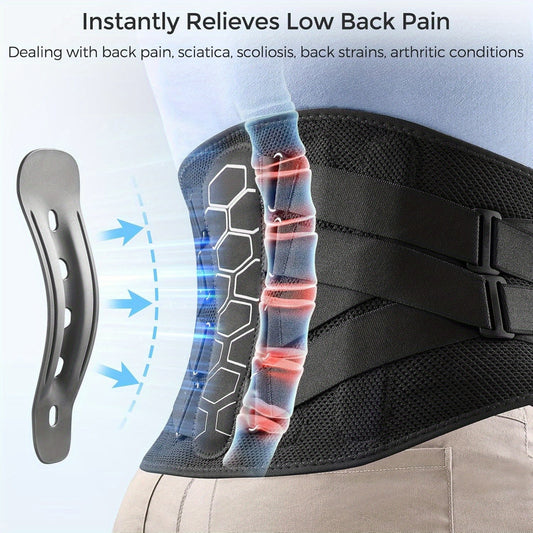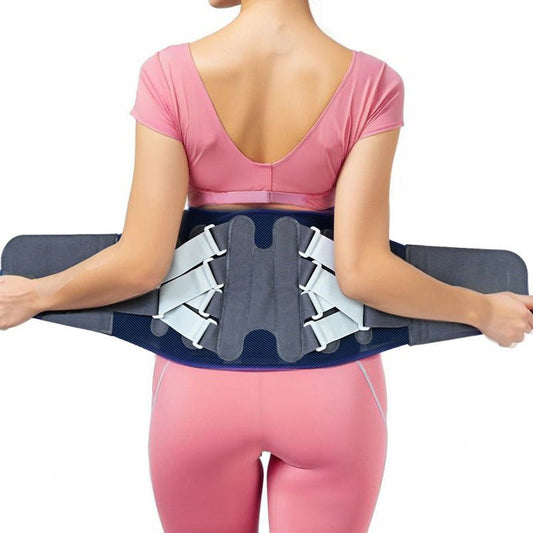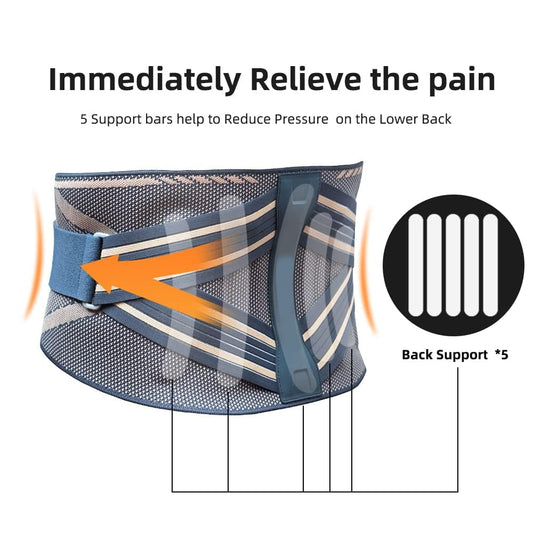How a Back Brace Really Works: The Science of Support and Stability
Share
Introduction: The Engineering Behind the Relief
In the landscape of personal wellness, we often seek solutions that are both effective and easy to understand. When it comes to back pain, a quality support brace is a cornerstone of this approach. But how does it move beyond simple wrapping to provide real, structural relief?
The answer lies in biomechanics. A modern brace is an ergonomic tool designed to work in harmony with your body. It provides relief not by magic, but by applying three key scientific principles that support your spine and retrain your muscles.
Principle 1: Structural Alignment and Motion Control
When your lower back is sore or injured, the spine and surrounding muscles are in a vulnerable state. A brace provides crucial external stability.
This is more than just stopping you from moving; it’s about Kinematic Control. By using flexible yet firm stabilizers, the brace acts as a set of guardrails, preventing the harmful micro-movements—the slight twists and over-extensions—that can aggravate an injury and prolong pain, all while allowing for safe, functional motion.
Think of it as scaffolding around a historic building during restoration. It doesn’t change the building itself, but it provides a secure framework that protects it from further damage while the real healing happens within.

Principle 2: Spinal Decompression via Intra-Abdominal Pressure
This is perhaps the most significant principle. When properly fitted, a brace applies consistent compression around your core. This elevates what’s known as Intra-Abdominal Pressure.
This internal pressure creates a firm cylinder around your midsection, which acts as a powerful support column. This phenomenon effectively unloads a significant portion of the weight from your lumbar spine.
It’s like turning your core into a pressurized column, similar to the powerful hydraulics that lift heavy objects. This "internal lift" creates space between your vertebrae, reducing the strain on overworked discs and muscles, which is why the relief can often feel immediate.

Principle 3: Enhanced Proprioception for Postural Feedback
Finally, a brace is an intelligent tool for improving your posture, not by force, but by communication. It achieves this by enhancing Proprioception—your brain's subconscious awareness of your body's position.
The constant contact and gentle pressure of the brace on your skin provide a steady stream of sensory information to your brain. This feedback makes you more aware of your posture in real-time.
Analogy:This neurosensory feedback acts much like a physical therapist's guiding hand on your back. It’s a constant, gentle reminder that prompts you to engage your core and align your spine correctly, helping to break the cycle of habitual slouching and retrain your muscles for long-term health.

Conclusion: A Proactive Tool for Back Health
A high-quality back brace is not a passive crutch. It is an active ergonomic tool that provides pain relief by stabilizing your structure, decompressing your spine, and improving your postural awareness.
By blending these scientific principles with everyday comfort, it becomes an essential part of a proactive strategy for managing back pain, empowering you to heal correctly and move confidently.








